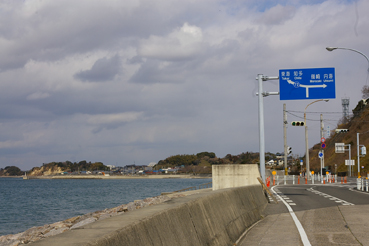

Roche of the United States District Court in Northern California denied Endo’s freedom.
#MITSUYE ENDO TSUTSUMI TRIAL#
On July 13, 1942, Purcell filed a writ of habeas corpus, arguing, “If you can abrogate certain sections of the Constitution and incarcerate any person without trial or charges just because you do not like his nationality, what is to prevent from abrogating any or all of the Constitution?” The Endo family had been moved to a temporary relocation facility near Sacramento, then 300 miles north to the remote Tule Lake Segregation Center, near the Oregon border. “They felt I represented a symbolic, ‘loyal’ American,” she said in “And Justice for All.” To top it off, her brother had served in the Army.

In a stack of 100 or so responses, one stood out.Įndo had never visited Japan, had attended a Sacramento public school and was a Methodist. In looking for the ideal plaintiff to represent the group, he distributed a questionnaire to internees. In the 1940s, the family lived and worked in one of the country’s largest and most vibrant Japantowns, a section of Sacramento with 3,400 residents and hundreds of businesses.Īfter the forced evacuation of Japanese-Americans, the Japanese American Citizens League, a national group, hired James Purcell, a San Francisco lawyer, to put together a case that would challenge the government and shutter the 10 detention camps it had opened. Her father was a salesman in a grocery store, her mother a homemaker. Mitsuye Maureen Endo was born on May 10, 1920, in Sacramento, the second of four children of Jinshiro and Shima (Ota) Endo, Japanese immigrants. Yet Endo, an unassuming woman, would never seek the spotlight, and by the time of the ruling she had never set foot in court. 18, 1944, that the government could not detain citizens who were loyal to the United States. In Endo’s case - Ex parte Mitsuye Endo - the court unanimously ruled on Dec. United States, in which the justices upheld the restrictions placed on Japanese-Americans. Three similar Supreme Court cases failed, most notably Korematsu v. Roosevelt had signed Executive Order 9066, ordering the internment of about 120,000 Japanese-Americans in camps throughout the country.Įndo, who was interned with her family, would go on to become the chief plaintiff in the only United States Supreme Court case to successfully challenge Japanese incarceration during World War II. “We were given a piece of paper saying we were suspended because we were of Japanese ancestry,” Endo said in the only interview she ever gave, to John Tateishi, for his book “And Justice for All: An Oral History of the Japanese American Detention Camps” (1984).īy then President Franklin D. Their attending Buddhist schools and their ability to read and write Japanese raised suspicions only further. Mitsuye Endo, a 22-year-old typist with the Department of Motor Vehicles, dutifully answered the questions, and that spring she was fired, along with dozens of other Nisei, or second-generation Japanese-Americans, who worked for the state.Īlthough born in the United States, Nisei were accused of holding Japanese citizenship as well, a sign to many Americans of potential disloyalty. Within weeks of Japan’s attack on Pearl Harbor, the state government had sent an invasive questionnaire to its employees of Japanese descent.ĭid they speak Japanese? Had they ever visited Japan? Were they members of any Japanese organizations?Īnti-Japanese sentiment was high, and the survey, with its accusatory tone, seemed bent on portraying the workers as untrustworthy. It was January 1942, and Japanese-American civil servants in California were alarmed.
#MITSUYE ENDO TSUTSUMI SERIES#
Overlooked is a series of obituaries about remarkable people whose deaths, beginning in 1851, went unreported in The Times.


 0 kommentar(er)
0 kommentar(er)
